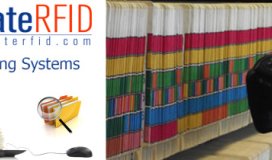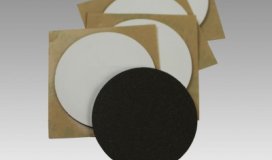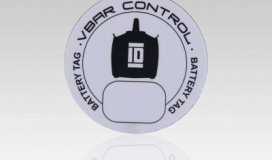New race directors and race timers often ask for our guidance with putting together an RFID race timing system, also known as a chip timing system. They often have a do-it-yourself mentality and are eager to build their own chip timing system, but may not necessarily know where to begin.
After watching other companies set up timing systems at races, most DIY race timers are familiar with the basics of race timing, but the inexperience of managing a system may create some headaches when you begin building your own system. This short guide will point you in the right direction and cut down on those headaches.
Basic equipment needed in an RFID timing system:
1. Reader: A reader will scan the tags as they cross checkpoints and finish lines.
2. Antenna: The antenna serves as the crucial piece that communicates information between tags and the reader.
3. Chips/Tags: A tag contains the RFID chip which stores and processes unique information. Race participants will wear a tag, usually on their bib.
4. Cables: Cables connect the antenna to the reader.
5. Timing Software: Software will process the information and track time stamps of participants.
At atlasRFIDstore.com, we offer off-the-shelf equipment for your system, so you can buy all the necessary readers, antennas, tags, and cables. If you’re looking for a complete timing system with software, take a look at our chip timing starter kit.
Also, many of our customers use a software development kit (SDK) from the manufacturer and code their own timing system. If you are interested in going this route, we provide the SDK at no additional charge with the purchase of a reader.
I asked Rick Williams, our lead sales engineer, to give us some suggestions for hardware options:
RFID Reader
If you are a software engineer or have contracted a programmer, you can choose from several great RFID readers:
1.Impinj Speedway Revolution R420 RFID Reader
2.ThingMagic M6 RFID Reader
3.Alien 9900+ RFID Reader
If you wish to avoid integrating with the reader, Impinj offers software that will read RFID tags
and output data in various formats (e. g. keyboard wedge, https post, etc. )#). The software, Speedway Connect, only works with the Impinj Speedway Revolution R420 RFID Reader.
For close range RFID chip encoding, many race timers use a simple ThingMagic USB RFID reader. It connects directly to the PC and has a short range antenna so that only the desired tag is encoded.
RFID Antenna
Many types of antennas will work with the readers; however, choose antennas that are rugged enough to withstand the wear and tear of constantly being moved around, packed and repacked, stepped on, etc. Also, the antenna needs to be rated for use outdoors in case of rain or high humidity.
If you’re looking for an outdoor mat antenna, Times-7 manufactures a low-profile, rugged ground antenna. The RFID mat antennas will read tags when race participants travel over the mats.
In some occasions, placing antennas on the sides of the course is more practical. MTI Wireless Edge has an outdoor RFID antenna with a long read range.
RFID Tags
Typically, race timers use RFID chips that provide the greatest read range, and a variety of race timing tags are suitable for different applications. Most timers use the following tags affixed to race bibs:
The SMARTRAC ShortDipole and the Alien Squiggle offer good read range at a great price per tag. These tags are used most often.
The SMARTRAC DogBone is slightly more expensive than the aforementioned tags; however, the read range cannot be beat. If you are in a situation where maximum performance and accuracy is required, this is the tag to use.
For an optimum set up, affix two RFID chips encoded to the same ID on the race bib with one in a horizontal position and the other in a vertical position.
RFID Cables
Depending on your hardware configuration and the set-up of your system on race day, the RFID cables you need will vary in terms of length, insulation rating, and connector types.
It is important to ensure that cables are not an afterthought as using the wrong cable type can lead to a high amount of loss and, as a result, missed tag reads.
If you’ve created your own race timing system or have questions or comments regarding this post, please let us know by posting below.



